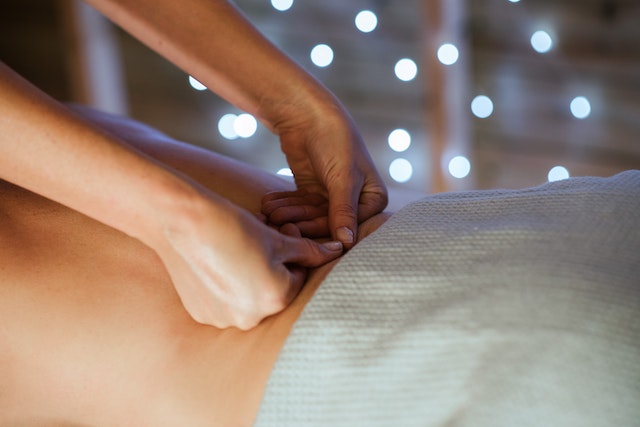When we refer to disc bulge we are referring to what is known as cleverón discal. This consists of the bulging of the fibrous envelope that is responsible for surrounding the intervertebral disc. This differs from a herniated disc in that it is úThe latter consists of a departure from part of the núcleus pulposus through a fissure located in the fibrous envelope of the disc.
Thus, we can talk about the difference between hernia and protusión as the fact that there has been an output of the content or just the deformationón of the wrapper with no content output. shoulder blade or shoulder higher or bulging than the other úlast case is when to speakímasters of protusióno disc bulge.
This is the theoryía, and it is that sometimes it is not easy to be able to see in a magnetic resonanceétick if this has happened. For this reason, in some cases, some méDoctors consider that if the deformationón observed in the resonance has a base más wider than that of vértice is considered a protusión; and in case the tip is the same width or más that the basis, I know how to beítalking about a hernia.
Index
Cóhow a bulging disc occurs
Under normal conditions, disc wear undergoes a normal process that causes some of the fibers that are part of its fibrous envelope, go losing elasticity and resistance; and they can tooén cause them to retract or depart spontaneouslyánea. When this happens, part of its gelatinous content located in the disc can come out and thus causeí a disc bulge.
In some cases, I took itón that is suffered inside the disc can exceed the resistance capacity of the fibers of the fibrous envelope, so that the part and a portionón of the disc bulges or herniates. Since the no.úCleo pulposus is gelatinous in content, when the spine bends forward, the disc tends to see how it moves in the opposite direction, backwardsás, so the same thing happens when it happens in reverseés. The rear of the fibrous casing has less resistance than the front, since it is máit's fine, hence it's meáit is frequent that the disc bulge appears at the back of the disc.
In this way, the situationón más common in which a herniated disc occurs is when the patient leans forward with their legs stretched out, when you carry weight in your arms and get up, increasing the gripón until the resistance capacity of the aforementioned fibrous envelope is exceeded and the disc herniation occurs.
Nevertheless, esta situationón, although it is the más típica is not the máit's frequent; and it is that in the greateríIn most cases, hernias are caused by a process of gradual wear of the fibrous envelope; and in few cases there is only one trigger of this problem.
There are different muscular mechanisms that reduce blood pressure.ón supported by disk, and who work to prevent a disc bulge, since they stabilize the load.
Factors that increase the possibility of suffering a herniated or bulging disc
There are different factors that can increase the probability of a hernia or protusion appearing.ón discal, as they are, among others, the following:
- Having a musculature that is tooéwas.
- Sitting for a long time, especially if it is a person who does not exercise, that is to say, be sedentary, as this accelerates muscle atrophy; or by adopting positions in which the anterior part of the vévertebra bears a greater load than the posterior, for being bent over for many hours.
- Being subjected to vibrations that affectónot on the body, which is common in people who drive tractors or other máindustrial machines; and it is that this can make it máIt is easy for the fibers of the fibrous sheath to tear.
- Other factors that can cause it are some genes, that may be linked to a lower resistance of the fibrous envelope.
Síbulging disc symptoms
The interior or notúcleus pulposus of the disc has substances that irritate the nerves. Under normal conditions there are no nerves inside the disc, so that these substances cannotíthey will cause irritationóno nerves. There are usually nerves in your part máexternal s of said envelope and especially in the lateral parts of the posterior wall.
In the event that the hernia occurs in an area without nerves of the fibrous sheath and its volume is smallñor to not compress the raíz nervous, mayínot to cause discomfort or pain. Nevertheless in the event that it takes place in an area where there are nerves, the substances contained in the hernia will excite them and this will causeá the sífollowing symptoms:
- back pain, in the lumbar or cervical area, depending on where the hernia occurred. This beá triggered by the rupture of the fibrous envelope and by the contracture that reflects the musculature.
- radiating pain, to the arm in the case of disc protrusions or bulging or cervical hernias, and in the case of the leg in the case of the lumbar. This pain is given by the liberationón the nerves of some substances that cause inflammationódisc no., dayínerve z and the white tissues of the area, además to irritate in a way thatílittle by littleíz nervous.And if the volume of the protusión o hernia is big enough or the inflammationónot important enough, spaghettién can lead to comprehensionón de la raíz nervous. If sensitive nerves are compressed, you will sufferá a radiating pain, that can occur together with an alterationón o péloss of sensation in the area whose sensation is picked up by that nerve. If a motor nerve is compressed, the strength of the muscle group innervated by that nerve is reduced.

